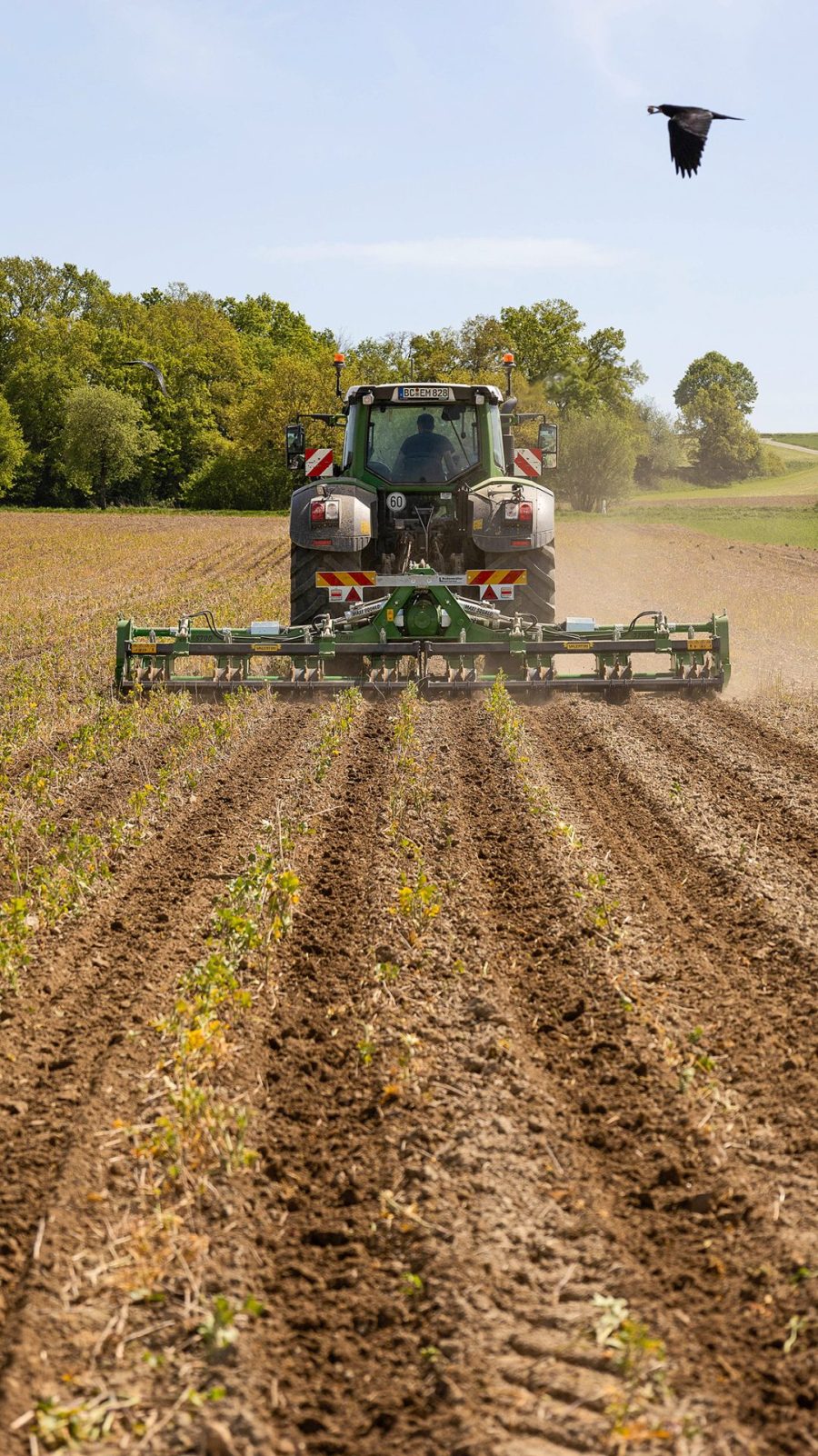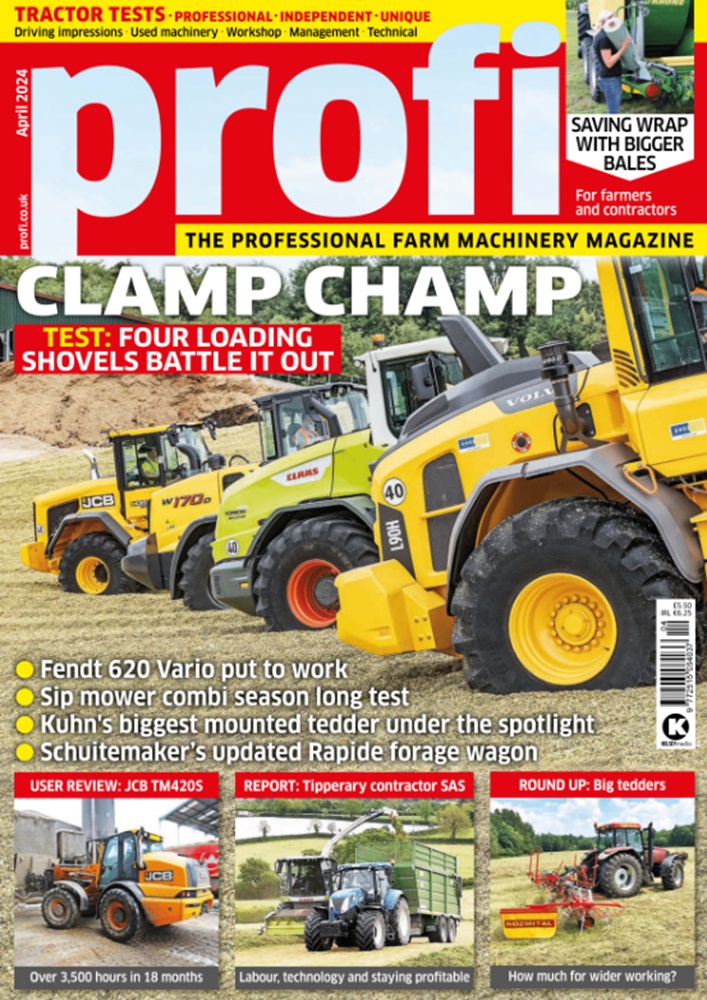Italian rotary cultivator maker Valentini is throwing its hat into the strip-till ring with a machine aimed at the maize establishment market. We had a go with the near 6.0m wide version, enough for preparing eight rows. Here are our thoughts.
KEEPING IT BRIEF
- The Valentini appears to be a robust, well-made machine.
- AMIA handles distribution in the UK and Ireland
- Rotors are available with different spacings from 50-80cm as an option.
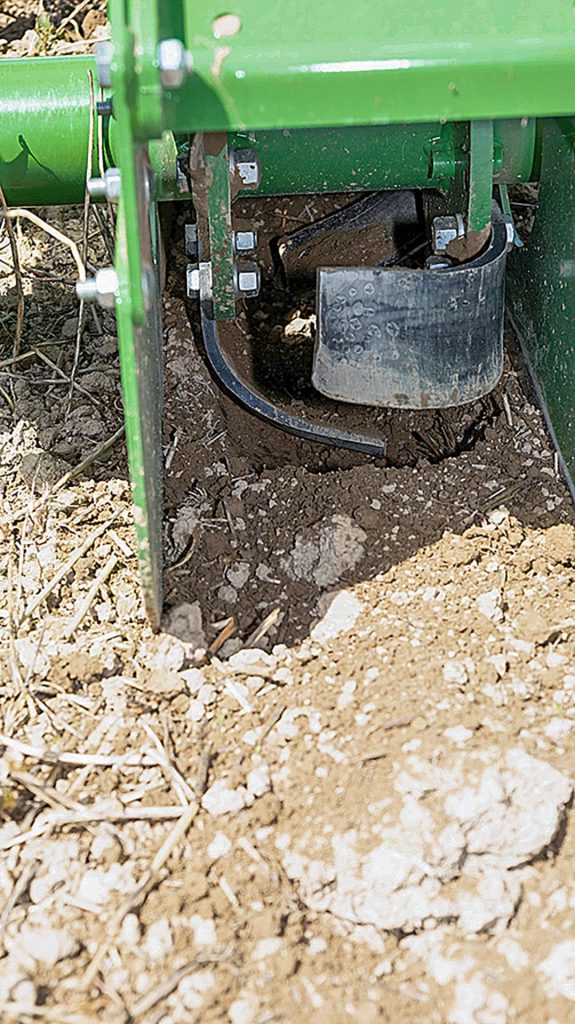
As well as power harrows, rotary cultivators and mulchers, Italian firm Valentini also manufactures stone crushers, stump grinders and forestry mulchers — basically, machines that need to be robust and have a high-speed spinning rotor that will simply shake off an encounter with a stone or stump.
Powerful gearbox
On the Strip Maxi Squalo 5700 strip-till cultivator (and the narrower models in the range), the gearboxes are designed for up to 240kW/330hp. Valentini’s side-mounted gearboxes have four gears taking power from the central gearbox, a design that helps to control the oil temperature under load, says the manufacturer.
They also say that the machine needs in the region of 180-200hp for tilling eight 30cm wide strips at a shallow depth. Our machine was hitched to a 280hp Fendt 828 Vario. This meant the tractor had plenty of power in reserve and was able to till the strips at around 7km/hr.

4-25cm working depth
The farmer had already injected slurry to a depth of 11cm to the field. Our aim was to not cultivate as deep, so the Strip Maxi was set to work at about 8cm deep with the land then prepped for sowing. The cultivator has a working range of 5 to 25cm deep.
From a depth of 10cm or more, the skids protecting the side-mounted gearboxes run on the ground. In this instance, the trash and lumps of soil can collect in between the gearbox housing and the rotors. Luckily, in our particular field conditions, the snagged trash dropped to the ground after a while and didn’t cause any major hiccups.
Each rotor on our Strip Maxi Squalo had six angular knives, which are attached with two M16 bolts to the rotor. The angled blade that cuts into the ground is 90mm long. The blade material thickness is 10mm and in standard specification isn’t hardened. There are other blade designs available as well as different angle variants.
Sitting on the roller
As you would expect, there are several types of rear roller to choose from. On our test machine the tooth packer roller only came into contact with the cultivated strip behind each rotor and helps support the weight of the tiller. The cultivating depth is adjusted hydraulically via four hydraulic rams that connect the roller frame to the cultivator. Extra cylinders, with springs acting as shock absorbers, connect the roller frame to the rear hood flaps of the cultivator. The deeper the cultivator is set, the wider these flaps open. The minimum flap opening can be adjusted by refitting a pin in one of the multiple holes.
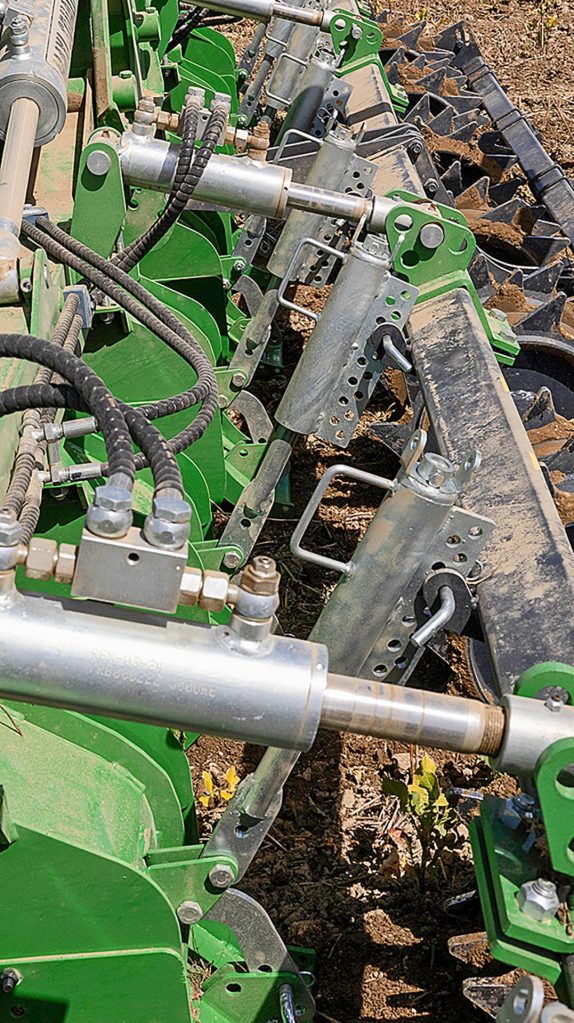
The central gearbox in the middle of the machine splits the tractor power to the right and left driveshafts. Four beefy hydraulic cylinders fold the 6.20m wide machine to a 2.50m by 3.10m road-going package. The necessary warning panels and lights are all standard spec.
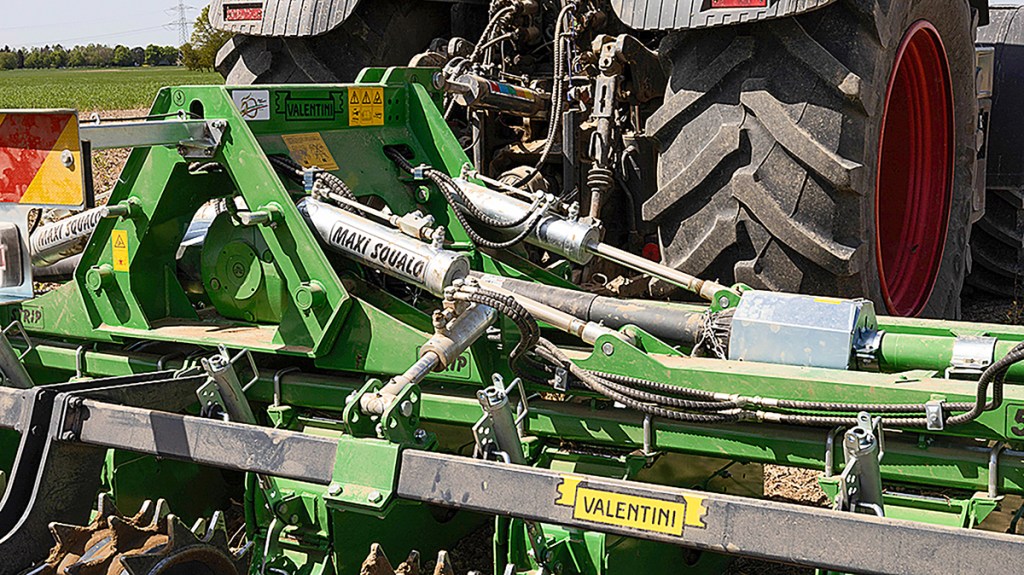
The Valentini Strip Maxi Squalo 5700 made a good impression in our dry yet not too hard clay soils with cover crop residues. And at 260rpm, the rotor blades produced strips of fine tilth ready for sowing.
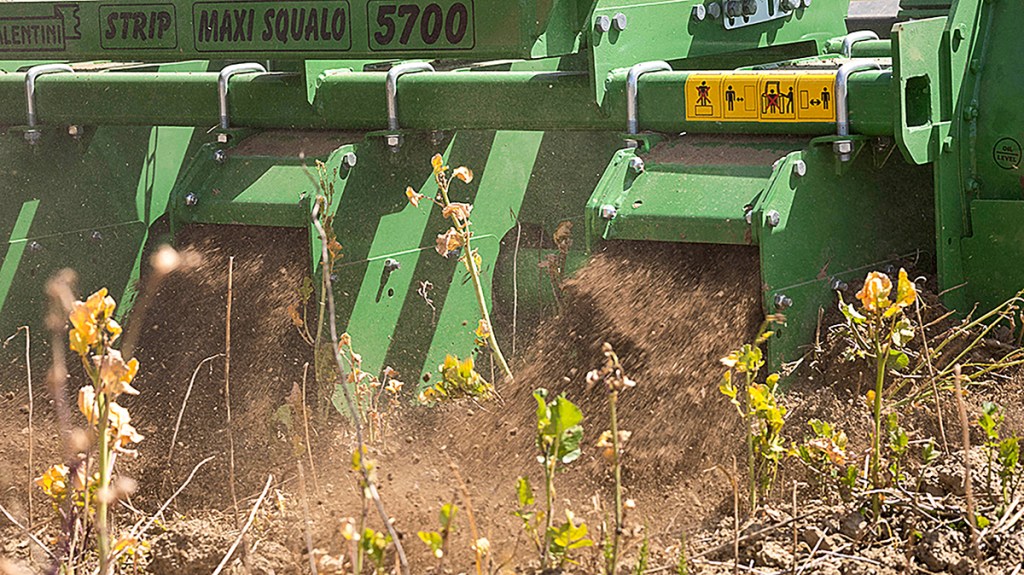
Other points worth mentioning
The Maxi Squalo is also available with a single-piece rotor for full-width cultivation, while Valentini’s Maxi Squalo Bio version is equipped with leading gauge wheels for mulching biomass.
Regardless of the rotor that’s fitted, all Maxi Squalo models share the same folding frame with a central gearbox and side-mounted gearboxes.
Anja Böhrnsen
For more up-to-date farming news click here and subscribe now to profi and save.

